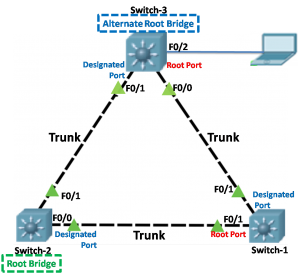How to Configure Spanning-Tree Bridge ID – Briefly Explained
When configuring a specific switch as a root bridge, the bridge ID priority value must be adjusted to be lower than the bridge priority values of all the other switches on the network. There are two different methods for configuring the bridge priority value on a Cisco Catalyst switch. Method 1 To ensure the switch

